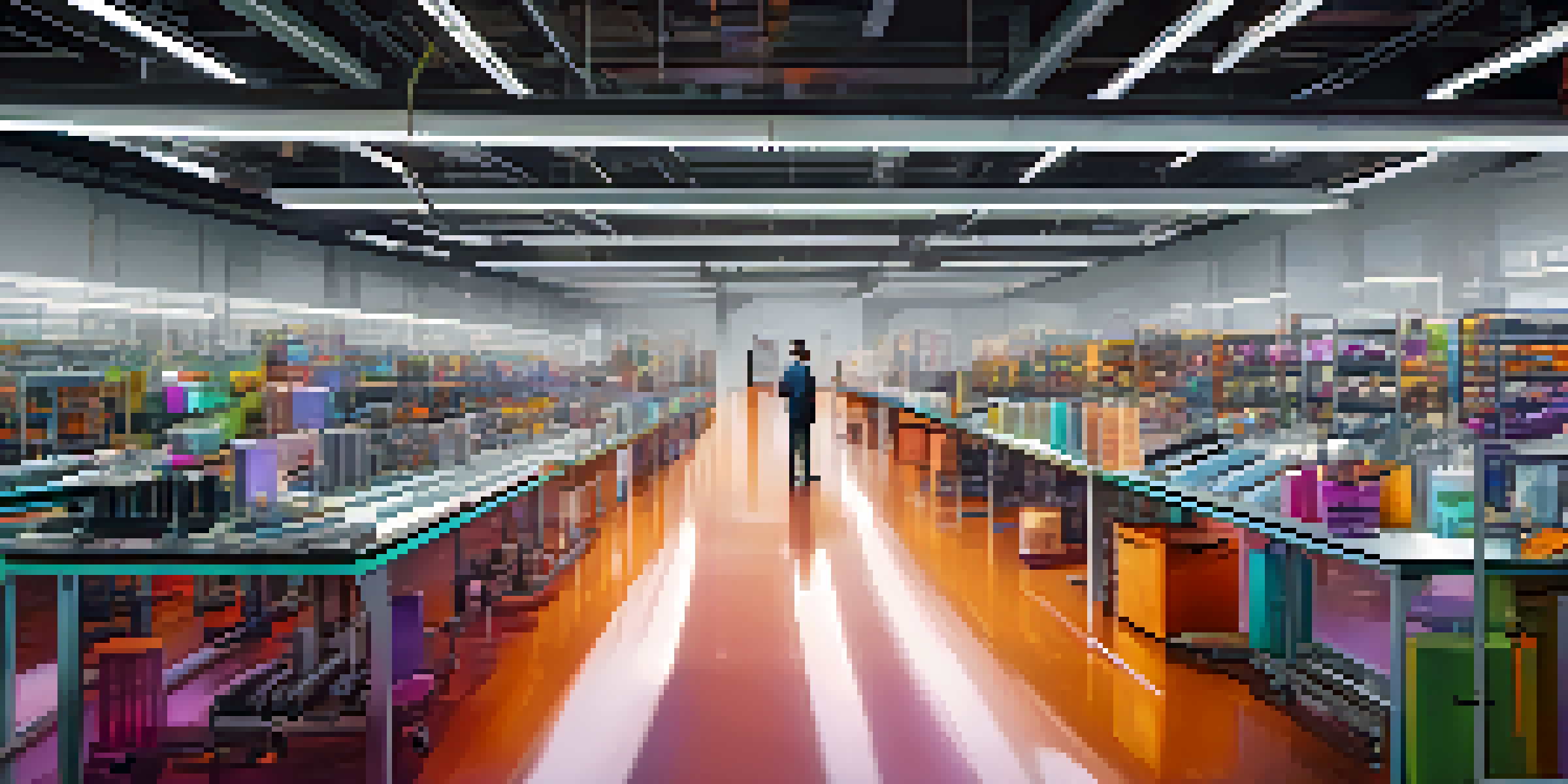Technological Innovations Transforming Fashion Supply Chains

The Rise of Digital Tools in Fashion Supply Chains
In recent years, the fashion industry has embraced digital tools to streamline operations. From design to delivery, technology is enhancing every stage of the supply chain. Companies are leveraging software solutions for inventory management, which helps them keep track of stock levels in real-time.
Innovation is the ability to see change as an opportunity – not a threat.
For example, brands that utilize cloud-based platforms can share information across teams and locations instantaneously. This connectivity not only reduces errors but also improves collaboration among designers, manufacturers, and retailers. With these tools, businesses can respond swiftly to market demands, creating a more agile supply chain.
Ultimately, the integration of digital tools is transforming how fashion companies operate, allowing them to pivot quickly and meet consumer needs more efficiently. This shift toward digitalization is not just a trend; it’s becoming a fundamental aspect of modern fashion supply chains.
Sustainability Through Technological Advancements
Sustainability has become a crucial focus in the fashion industry, and technology is leading the charge. Innovations such as 3D printing and eco-friendly materials are helping brands minimize waste and reduce their environmental footprint. By producing items on demand, companies can significantly cut down on overproduction, which is a major issue in fast fashion.

Moreover, technologies like blockchain are providing transparency in sourcing materials. This allows consumers to trace the journey of their garments, ensuring ethical practices are followed. For instance, when a brand utilizes blockchain, customers can verify where their clothing was made and the conditions under which it was produced.
Digital Tools Enhance Fashion Supply Chains
The integration of digital tools is streamlining operations in the fashion industry, enabling brands to respond swiftly to market demands.
As fashion brands adopt these sustainable technologies, they not only appeal to eco-conscious consumers but also contribute to a healthier planet. This shift towards sustainability is not only beneficial for the environment but also positions companies as responsible leaders in the industry.
Artificial Intelligence: A Game Changer for Fashion
Artificial Intelligence (AI) is revolutionizing the fashion supply chain in remarkable ways. From predicting trends to automating customer service, AI tools are enhancing efficiency and responsiveness. For instance, AI algorithms can analyze vast amounts of data to forecast upcoming fashion trends, allowing brands to stay ahead of the curve.
Sustainability is no longer a choice; it is a necessity for businesses to thrive.
Additionally, AI-driven chatbots are streamlining customer interactions, providing instant support and recommendations. This not only improves customer satisfaction but also frees up human resources to focus on more complex tasks. The ability to quickly respond to consumer inquiries enhances brand loyalty and can lead to increased sales.
As AI continues to evolve, its potential in the fashion supply chain is boundless. Companies that harness these technologies can optimize their processes and create a more engaging shopping experience for their customers.
Data Analytics: Making Informed Decisions
Data analytics is another technological innovation reshaping fashion supply chains. By collecting and analyzing data from various sources, companies can gain insights into customer preferences and buying behaviors. This information is invaluable, enabling brands to make informed decisions about product development and inventory management.
For example, retailers can identify which items are trending and adjust their stock levels accordingly. This reduces the risk of overstocking or running out of popular products, leading to increased sales and customer satisfaction. Moreover, data analytics helps brands understand seasonal trends and plan marketing campaigns effectively.
Sustainability Drives Technological Innovation
Technological advancements like 3D printing and blockchain are helping fashion brands minimize waste and ensure ethical sourcing.
In a world where consumer preferences can change rapidly, having access to real-time data is crucial. By leveraging data analytics, fashion brands can stay relevant and responsive to their customers’ needs.
Enhanced Supply Chain Visibility with IoT
The Internet of Things (IoT) is transforming supply chain visibility in the fashion industry. By connecting devices and sensors, IoT technology allows brands to monitor their inventory and shipments in real-time. This level of transparency enables companies to track products from the manufacturing floor to the retail shelf.
For instance, smart tags can be attached to garments, providing valuable information about their location and condition during transit. This data helps brands anticipate delays and optimize logistics, ensuring that products reach consumers on time. Enhanced visibility not only improves efficiency but also builds trust with customers.
As IoT technology becomes more widespread, its impact on the fashion supply chain will continue to grow. Brands that embrace this technology will be better positioned to meet consumer expectations and improve operational performance.
Robotics: Automating the Production Process
Robotics is making waves in the fashion supply chain by automating various production processes. From cutting fabric to assembling garments, robots are enhancing efficiency and reducing labor costs. This technology allows companies to produce items at a faster pace, meeting the growing demands of consumers.
For example, some brands have implemented robotic sewing machines that can stitch garments with precision and speed. This not only decreases production time but also minimizes human error, resulting in higher quality products. Furthermore, automation can alleviate labor shortages in the manufacturing sector, ensuring consistent output.
AI Revolutionizes Fashion Industry
Artificial Intelligence is transforming the fashion supply chain by predicting trends and automating customer service for enhanced efficiency.
As robotics technology advances, its role in the fashion supply chain will continue to expand. Brands that invest in automation will not only improve their production capabilities but also gain a competitive edge in the market.
The Future of Fashion Supply Chains: A Tech-Driven Approach
Looking ahead, the future of fashion supply chains is undoubtedly tech-driven. As innovations continue to emerge, brands will need to adapt to remain competitive. The integration of various technologies—such as AI, IoT, and data analytics—will create a more interconnected and efficient supply chain.
This interconnectedness allows for better collaboration among stakeholders, from designers to suppliers. With a comprehensive view of the supply chain, companies can make strategic decisions that benefit their overall operations. Moreover, a tech-driven supply chain is more resilient, capable of adapting to market fluctuations and consumer demands.

Ultimately, the future of fashion supply chains lies in embracing technology to drive efficiency and sustainability. As brands evolve alongside these innovations, they will not only enhance their operations but also create a more positive impact on the industry as a whole.